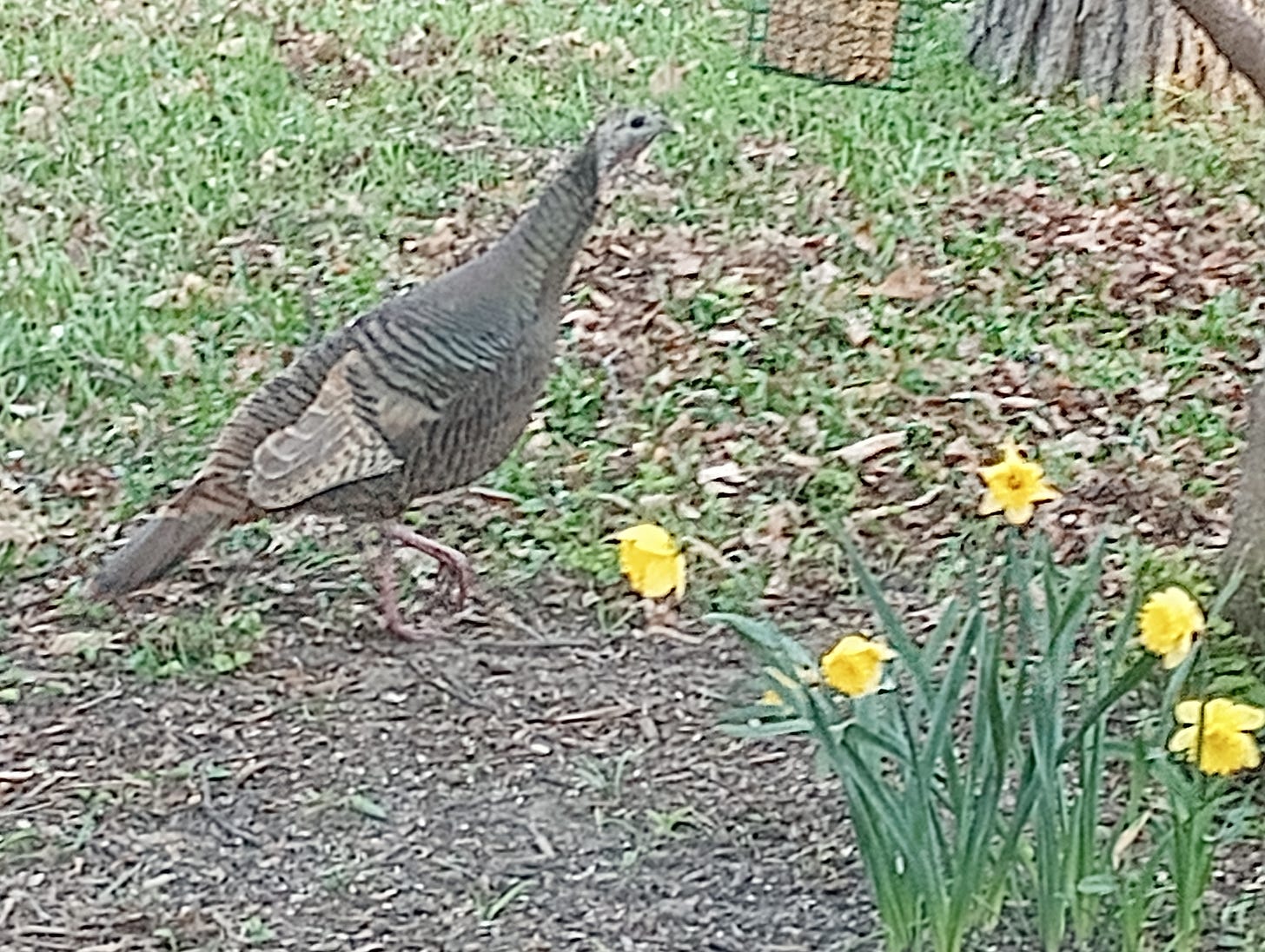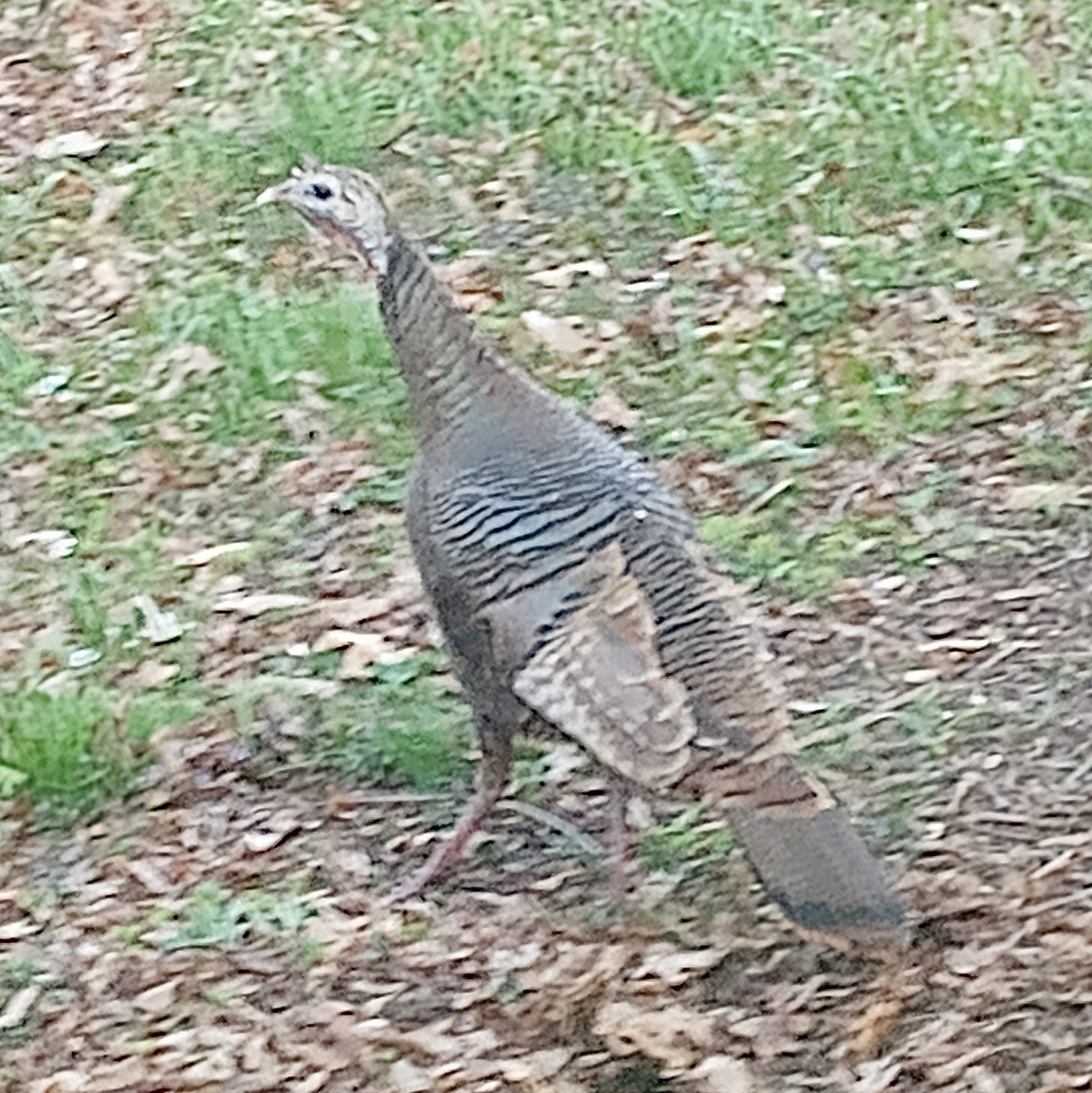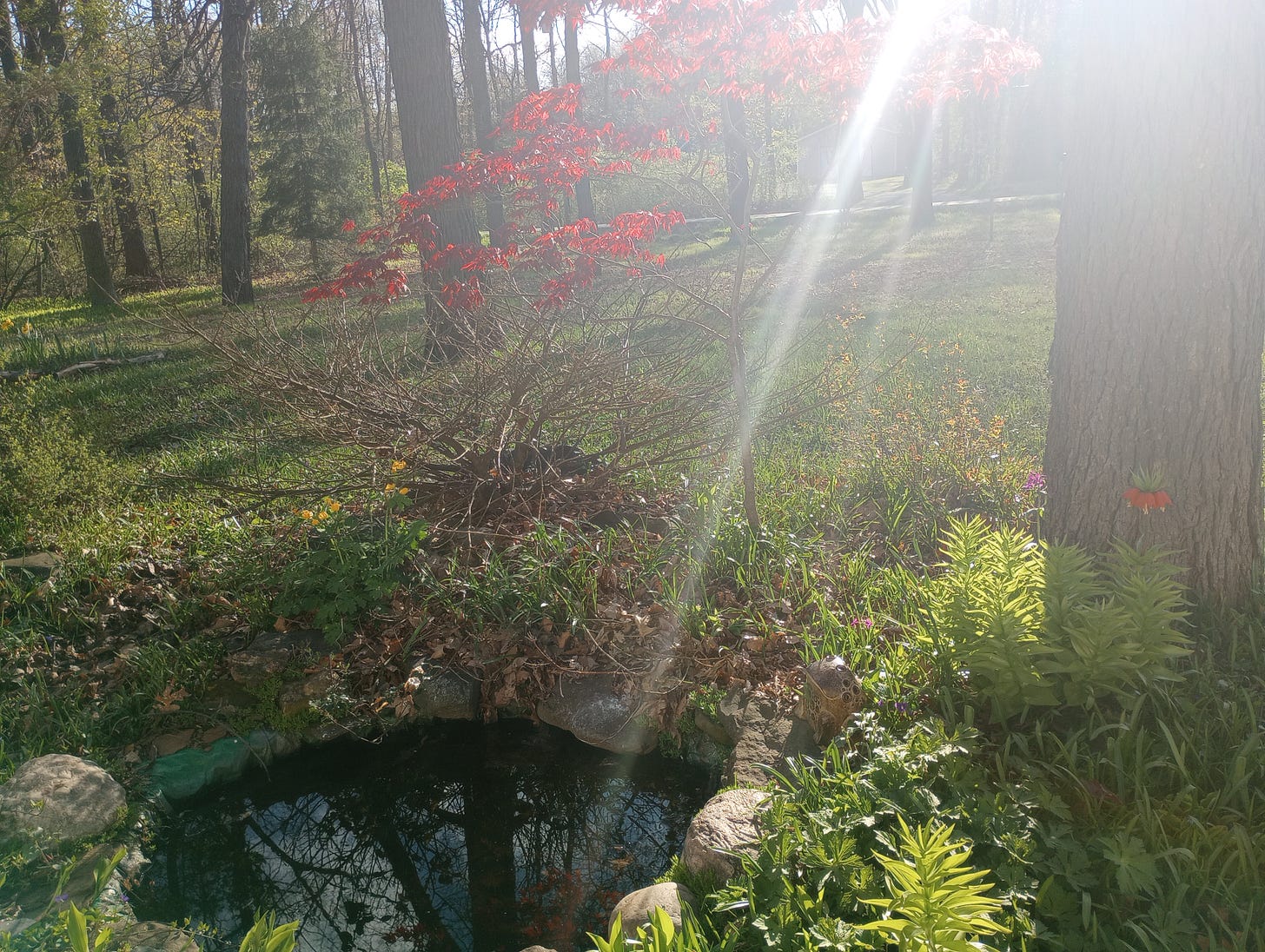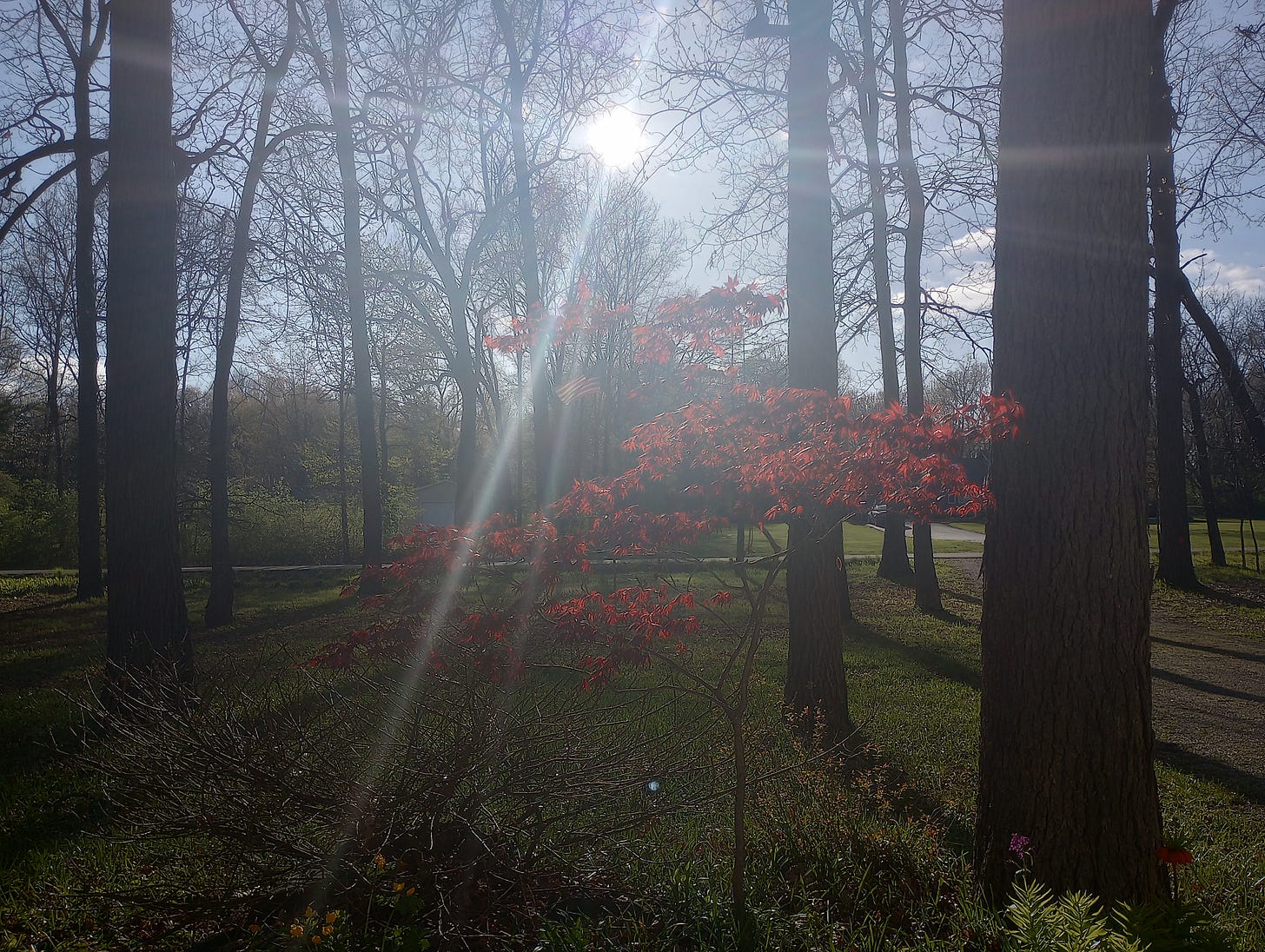Big bird at the bird feeder; & we make light; & a financial mindset workshop.
Wide Receiver workshop by popular financial author and podcaster Kate Northrup - she is helpful. Free replays through the weekend.
Wild turkeys are part of my wetland neighborhood (and mosquitoes shortly later in the spring - I added Diatomaceous Earth to the frog pond/mosquito larvae pit - that helps drop that population a bit.)
Fun with light and reflection in the frog pond.
Having a water feature in your garden can be good for a variety of wildlife but it will be a mosquito breeding ground all summer long. I add powdered Diatomaceous Earth over the surface about once a week or so or when I see wigglers in it. Mosquito larvae are visible as tiny wigglers, tinier than a tadpole but a similar shape.
The mini Japanese red maple is the most vibrant color in the spring and summer. It has stayed bonsai size in the rock garden because of the dense canopy from the tall trees.
We make our own light. That is part of the big news Jack Kruse is trying to tell us. Part two is here (Youtube). Modern life disrupts our ability to make internal light and then we think and function at a slower pace than during optimal health which clips along at a quantum pace. *I have a post in the works with more about the leptin melanocortin pathway, internal light, and weight loss. The short story is - sunshine helps us to not be overweight and blue light from our computers and any bright light at night, is helping to make us overweight - and iodine is involved somehow. I’m still learning.

From a webinar series by Kate Northup, author and podcaster about our money mindset and how intergenerational trauma can affect our adult actions regarding work and investing and budgeting. Replays of the three Zoom sessions are available through the weekend and she will be on again at noon today I think. https://katenorthrup.com/wide-receiver-thank-you/

Kate got into neurology too - our mindset is in our mind but it is in our unspoken feelings which is not a place verbal talk therapy can approach. We need to work on feeling safer around anything lingering from our childhood or epigenetically from ancestors. Any big trauma affecting our parents or grandmother may have affected our gene expression - which will be turned on or off.
If our grandma was living through the depression when pregnant with our mother, than our genes as a fetus may have been set towards scarcity. Famine prenatally can increase calorie conservation in the later generations, which during times of plenty can lead to obesity - too much of the energy is being saved instead of used for daily activity.
How can that affect our adult saving/spending/investing habits? The deprivation may be in our feelings about life - no matter how much money or supplies or art or gold or essential oils, that we may have collected (;-), it will never ever feel like enough to satisfy a suppressed/unconscious feeling of scarcity and need.
…and repeating verbal affirmations may never really lead to changing these unspoken feelings because they are unspoken.
In order to work towards change we need to examine those deeper feelings, think about what they might mean from what we know of our family history, or of history in general. Then we need to give ourselves messages of safety and plenty. And we also need to provide the skeptical, verbal part of our brain with concrete evidence to help reinforce the believability of those feelings of safety (our prefrontal cortex). “See brain - our bank account has savings, there is nothing for us (brain and me) to feel insecure about. There is enough money to cover 6 months of bills!, (or whatever your evidence might be).” Affirmations that aren’t believable won’t really help - “I will make a million dollars this year.” < not really helpful if your current income is in the thousands instead of hundred thousands.
Dear graphic artists - nice job.
*I want to try to film a slow motion video of my structured water beverages being poured, and compare it to tap water being poured. There is a visual difference. The sturctured suntea in particular will look a little thicker, shinier, smoother, and more viscous - more like pouring honey or syrup than pouring water - more like pouring the colloidal solution known as ‘milk’.
Disclaimer This information is being provided for educational purposes within the guidelines of Fair Use and is not intended to provide individual health guidance.











JD - beautiful pond, red maple and kickin chicken photos.